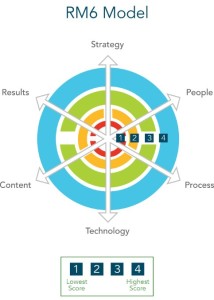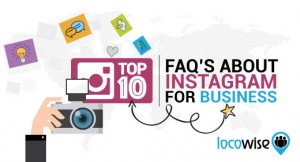— April 20, 2017

There are lot of opportunities in the partner realm. With resellers and referral partners (agents) opening up new channels to reach target industries, companies are able to expand their selling power. But not every partner channel is an easy approach to take. There are many factors that play a role in a business wanting to become a reseller or a referral partner and the company/vendor benefit that will result from this relationship.
Consider that each vendor has to factor in the costs of building a reseller channel. There is a high cost associated with training, certification and just to get the attention of the reseller and their sales team. In regards to training, sales and the rest of the team need to understand how to operate the product, the terminology needed to sell it and receive the in-depth knowledge to understand how to provide support and service. With all the training that has to happen there is inevitably a long period of time where nothing is being sold. And then, when an update occurs or new features are added, another round of training must occur. And once a reseller is fully trained, they likely have multiple products in their sales bag, so then it transitions to a struggle to get focus on selling the vendor’s product.
So what does this mean for the vendors? The amount of onboarding effort necessary for both vendors and reseller partners often jeopardizes the partnerships and the success of partner programs. According to the Ryan Morris, principal consultant at Morris Management Partners, prolonged onboarding cycles, program false starts, and ultimately a high rate of partner churn are often a consequence of the necessary burden involved in preparing reseller partners to bring your product to market.
An alternative approach to resellers is to establish a channel of referral partners. As opposed to resellers, training referral partners is a breath of fresh air. While they need to understand the value proposition, ideal user, and features to know if their referral is a fit, they don’t need much more. They aren’t trying to sell the product directly, just make a trusted and highly valued introduction to a company that offers their peer or customer greater value. This way the brand messaging, selling, and post customer engagement is owned by the brand which allows the company to give customers an authentic experience. In addition, partners can get a commission without any of the headache (or financial ache).
Here are some tips and tricks to enable referral partners and make them (and you) successful.
5 ways to enable successful channel partner referrals
1. Make sure your program supports the specific type of referral partners
One big part of referral partner success is how you go about enabling that partnership. The major determination for this is the kind of partners you are enabling with a referral program. For instance:
- Do you have a bunch of small partners or bronze level partners (individual partners, agents or small business) that have access to your target buyers in their constituency and can influence them? This only requires an automated referral program that can easily scale the referral partner channel and is available for those partners to register, refer, track their progress, and get rewarded.
- Do you have managed partners or silver level partners that need to enable their sales team to refer customers they interact with and that match your target customer? These require more complex referral partner programs as they need to have two tiers of management (company manages the partner and partner manages individual sales advocates and their activities) in order to provide unique rewarding and reporting by partner.
- Do you have a high performing large partner or gold level partner program? This is usually a single large partner. This partner’s productivity is so high, a dedicated, co-branded referral partner program is created for them that is highly efficient at generating leads.
Ensure that your referral partner programs aligns with the type of partnership you want to create. The different features in these types of programs can enable substantial growth of referral partners and success of their referrals.
2. Training is a powerful tool
As demonstrated above, training is still an important part of the referral partnership. Since the partner doesn’t need to demo the product or sell it directly, they don’t need to go through the highly intensive training and onboarding typically reserved for resellers which tends to slow down the training process and increase expenditures.
To train partners, think about what knowledge they will need in order to communicate the value proposition of your product succinctly. To help facilitate this, offer resources like:
- Monthly email updates on product innovation or service improvements
- Video or documents that gives partners a talk track on how to present the product
- Details on what makes a lead qualified
- Introduction and walk through on the referral partner software
- The types of pains the product solves for
Of course, for a tiered referral program, either the company or the partner will also have to take this training and communicate it to their sales team. The partner may add on certain materials to present their sales team which could include specific incentive levels that align with the unique values of each successful referrals.
And in regards to a dedicated partner, they will most likely have themselves aligned with your value proposition, but providing the generalized information above could always help.
3. Make referring easy and trackable by partners
The complicated onboarding that is associated with the reseller model is part of what makes reseller churn an issue. Learning your lesson from that, make partner referrals as easy as possible.
Try giving partners a variety of trackable referral methods which will allow them to adapt their referral method to the type of interactions they are having. This includes:
- Suggest a lead form
- A way to collect verbal referrals
- Email sharing
- Social media sharing
- Shareable urls
- Printed cards
While suggesting a lead will most likely be the most popular since it doesn’t require the referral to do any work, it is always a good idea to provide options. For instance, if a partners contact is more comfortable with another form of referral they can have the option of using it.
Another important aspect of referral partner engagement is allowing referral partners to check the status of their referrals and know how they are progressing. You don’t want partners calling you up all the time to try and figure out if their referral became a customer.
Make sure your referral partners can easily access information about their referrals in the program. Try automating notifications when a referral status changes to alert the partner if there referral is moving forward or successful or was unsuccessful.
4. Offer incentives that partners find valuable
Determining the incentive that your partners are most motivated by can be difficult. You have to take into account the effort they put in and how deep the relationship is with a certain partner. If you have multiple managed partners, the reward should be able to be automated and managed per partner so partners that are considered more valuable contributors can be treated as such.
When Citrix was deciding on how to incentivize managed partners, they did a number of studies on what competitors in their space where doing and that is how they landed on offering 20% of the annual value of the deal. However, Citrix uses an escalating reward structure as partners mature in order to reward low performers, mid-performers, and high performers in a way that will motivate higher numbers of referrals from a single partner. Automating an escalating reward structure for partners is a good way to incentives and scale a referral partner program.
5. Keep it top of mind
Promotions aren’t only for customer. You always want to make sure that your referral partner program is kept at the forefront of partners minds. For a dedicated referral partner this could be easy. But it is still good to reach out every quarter or so and offer helpful tips or remind partners of the chance to escalate their incentive with more referrals.
For individual partners, you might want to reach out by email or by phone more often in order to keep engagement up. These partners most likely have other companies they are working with and further nurturing is required to keep them sending leads.
Do you want to learn more about how to optimize referral partner engagement? Listen to what Randy Fahrbach, Senior Manager of GoTo Channel Development at Citrix/GoToMeeting suggests as he walks through his experience of automating his managed partners with a referral program.
Business & Finance Articles on Business 2 Community
(45)






